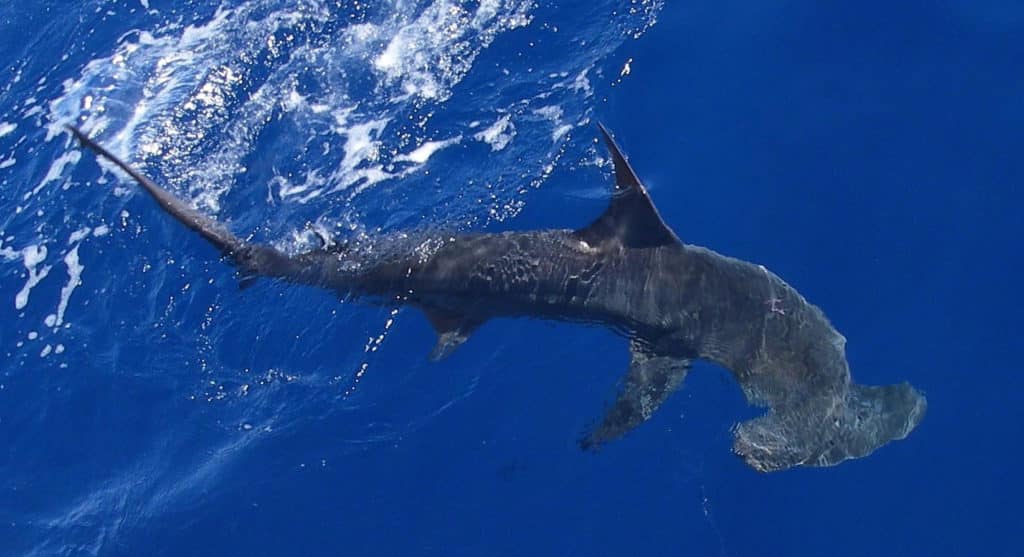
Hammerhead Shark
A new study led by scientists at the University of Miami (UM) Abess Center for Ecosystem Science and Policy and the Rosenstiel School of Marine and Atmospheric Science investigated how several species of coastal sharks respond to stress from catch-and-release fishing. The results revealed that each of the shark species responded differently. Hammerhead sharks were by far the most vulnerable to fighting on a fishing line.
The UM scientists experimentally simulated catch-and-release fishing on five shark species – hammerhead, blacktip, bull, lemon and tiger sharks – in South Florida and Bahamian waters. Researchers took blood samples to examine stress, including pH, carbon dioxide and lactate levels, conducted reflex tests, as well as used satellite tags to look at their post-release survival. Fighting on a fishing line significantly affected the blood lactate levels of sharks, similar to what happens to humans during intense or exhaustive physical exercise, which has been linked to mortality in many species of fish. The study revealed that even with minimal degrees of fighting on a fishing line, hammerhead exhibited the highest levels of lactic acid build of all species studied, followed by blacktip, bull, lemon and tiger sharks. Tagging results also suggested that, after release, hammerheads were also prone to delayed mortality.
“Our results show that while some species, like tiger sharks, can sustain and even recover from minimal catch and release fishing, other sharks, such as hammerheads are more sensitive” said lead author and Abess Center Ph.D candidate Austin Gallagher. “Our study also revealed that just because a shark swims away after it is released, doesn’t mean that it will survive the encounter. This has serious conservation implications because those fragile species might need to be managed separately, especially if we are striving for sustainability in catch and release fishing and even in bycatch scenarios.”
Adds study co-author Dr. Neil Hammerschlag, a Research Assistant Professor at UM, “Many shark populations globally are declining due to overfishing. Shark anglers are some of the biggest advocates for shark conservation. Most have been making the switch from catch and kill to all catch and release. Our study helps concerned fisherman make informed decisions on which sharks make good candidates for catch and release fishing, and which do not, such as hammerheads.”
The study, titled “Physiological stress response, reflex impairment and survival of five sympatric shark species following experimental capture and release,” was published in the special theme issue “Tracking fitness in marine vertebrates “in the journal Marine Ecology Progress. The paper’s co-authors are Austin J. Gallagher, Neil Hammerschlag, Joseph E. Serafy of the National Marine Fisheries Service in Miami and Steven J. Cooke of the Ottawa-Carleton Institute of Biology and Institute of Environmental Science in Ontario, Canada.








